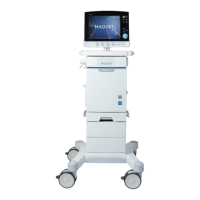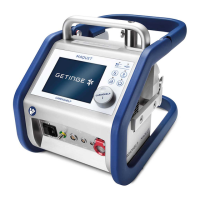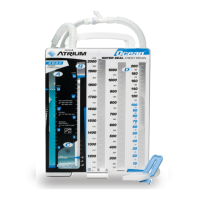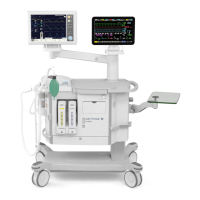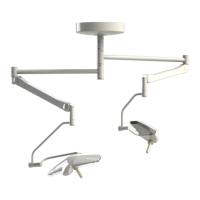Inspiratory oxygen concentration and alarm
limits
The illustration opposite shows how the
settings for the 'FiO
2
: Low' alarm affect the
activation thresholds for O
2
Guard and the
Safety Flush. At lower alarm settings, the
respective thresholds for O
2
Guard and Safety
Flush decrease accordingly to avoid
interference between the functions. At higher
alarm settings, these thresholds remain at
20.5% and 17.5% for O
2
Guard and the Safety
Flush respectively.
Each shaded area corresponds to a system
action that is dependant on the current
inspiratory oxygen concentration (Y-axis), and
current alarm limit settings (X-axis). A vertical
line can be drawn from the X-axis (21% in the
illustration), representing the current alarm
level setting. In this case, as long as the
inspiratory oxygen level remains above 21%,
no O
2
-alarm is triggered.
However, if at an alarm setting of 21%, the
inspiratory oxygen falls below 21%, the 'FiO
2
:
Low'-alarm is triggered. If the inspiratory
oxygen decreases even further, then O
2
Guard
is activated at 20,5%, and the Safety Flush at
16,5% respectively.
The O
2
Guard and Safety Flush are only
activated after the trigger requirements have
been met for more than 20 consecutive
seconds.
99
30
25
21
17.5
13.5
0
1
4
3
2
[O
2
]%
18% 99%
21%
Inspiratory oxygen concentration i listed on the Y-axis, and
inspiratory oxygen alarm level on the X-axis.
1. Normal operation (no alarm)
2. Activation of the low inspiratory oxygen
alarm
3. Activation of O
2
Guard
4. Activation of the Safety Flush
FLOW-i 4.2, User's Manual
69
| System functionality |
5 |
